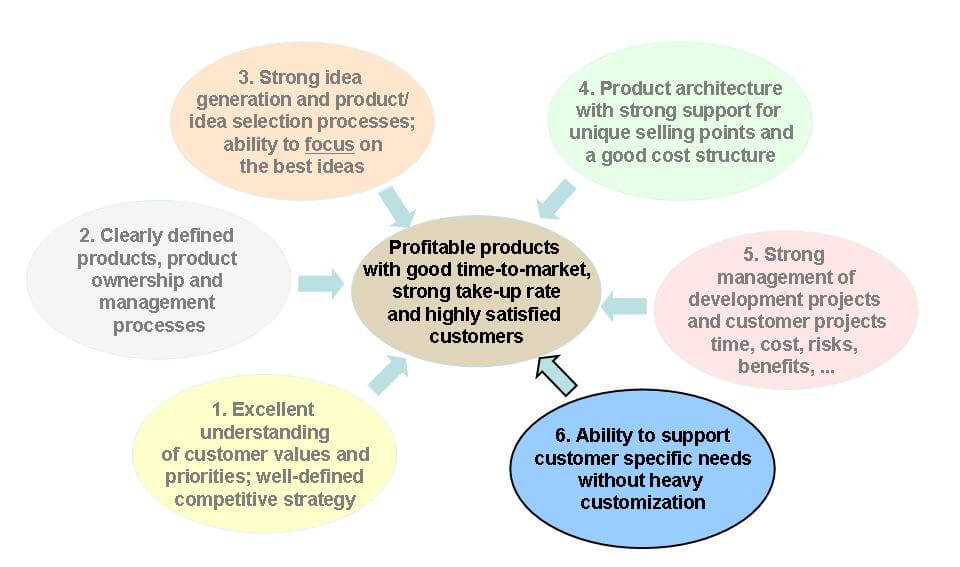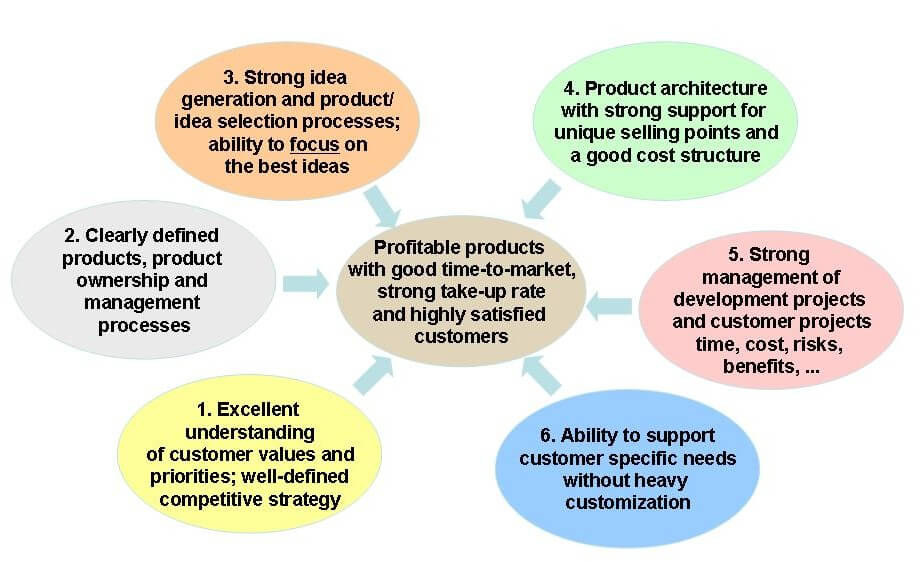6 critical success factors for product development
The ability to achieve profitable product development has been vital for most companies long before the current hype surrounding the term ‘innovation’.
While it is possible to find radically new solutions (i.e., to innovate) in several other areas than products and services, a company that fails in the product development area will normally not last very long.
Several critical success factors are required to succeed in product development. As per Christian Wig post a strong up-front evaluation of a product idea is certainly very important, but other factors are equally important.
The 6 success factors Christian Wig mention on is blog based upon lessons learned over the past years, sometimes ‘the hard way’.

Profitable products, that’s definitely an objective. And high customer satisfaction, implying that customers will likely remain loyal and with a reasonable willingness to pay over time, which is vital for long-term profitability.
Now, from objective to actions. What are the most vital success factors to achieve the stated objective?
1: Understanding your customers

The importance of understanding the customers cannot be overstated. Most companies operate without clear and well-defined understanding of true customer needs, what their customers actually value the most and the least, what they are willing to pay for and what would make them stay loyal. And, even if these factors are well understood, the ability to build and execute a competitive strategy is often lacking.
Clearly, you can forget about profitable products if you do not understand your customers.
2: Strong product management

The lack of proper organization and well-defined product management processes is an extremely typical cause of inability to bring even excellent product ideas to the market. Without an owner nothing is going to happen after the initial brainstorming. And even with a well-defined product owner, most required actions will not take place unless the processes are in place to get beyond the idea stage. Make sure the product owner is not merely a ‘technical’ one, but in fact measured on all 3 components of my initial objective: profitability, time-to-volume and customer satisfaction.
And with ownership and customer understanding in place, we can start moving.
3: Ability to identify and focus on the best product ideas

This factor is probably the most obvious. But I still want to underline the word focus. Far too many companies try to develop too many product ideas at the same time. Try to avoid that pitfall!
So now we have a deep understanding of customer needs, strong and clearly focused product ideas, and management and processes in place to move forward. What could possibly go wrong?
4: The right product architecture

What happens when you move from the stage of product idea into deeper analysis, design and engineering? Different people take over. So we must make sure we create a handover where the new people really understand what’s vital. And do we manage that? Rarely.
Normally, there is no easy way to ‘tune’ a product architecture once products have been built and launched based upon that specific architecture. It’s like building a house: You better find out whether you need an elevator before you have already built the first three floors. It is not impossible to redesign afterwards, but it is extremely expensive and time consuming. And often you are better off scratching whatever you built and start with blank sheets of paper.
5: Strong project management

This success factor is also rarely on the radar of the ‘innovation people’. But true innovation is not about generating ideas, but about execution. Ideas are not very valuable unless they are properly implemented, which brings me to the hard disciplines of managing time and costs, benefits and risks, team members, contractors and vendors, issues and requirements, tasks and milestones. And all the other good stuff related to project management. Project management? Yes, proper product development requires heavy involvement across typical boundaries between departments and business areas. So the project form is nearly always better than implementation through a line organization.
6: Support for customization

Unless you have worked heavily in the software business, you probably would not put this factor on your short-list. But I have seen so many examples where the rate of innovation trends towards zero (and maintenance cost skyrockets) due to inability of separating changes to the product core from customer specific customization.
Getting the customization issue right actually has to do with most other success factors. It is related to understanding which customer needs are customer specific, and which are ‘generic’. It is about building a product architecture that enables customization. And it’s about the way customer projects are run and how different customer groups are involved in regular product development projects.
Bringing it all together

And it will certainly help bringing the innovative ideas out from the boardrooms, brainstorming teams and speaches – and in the direction of the customers.